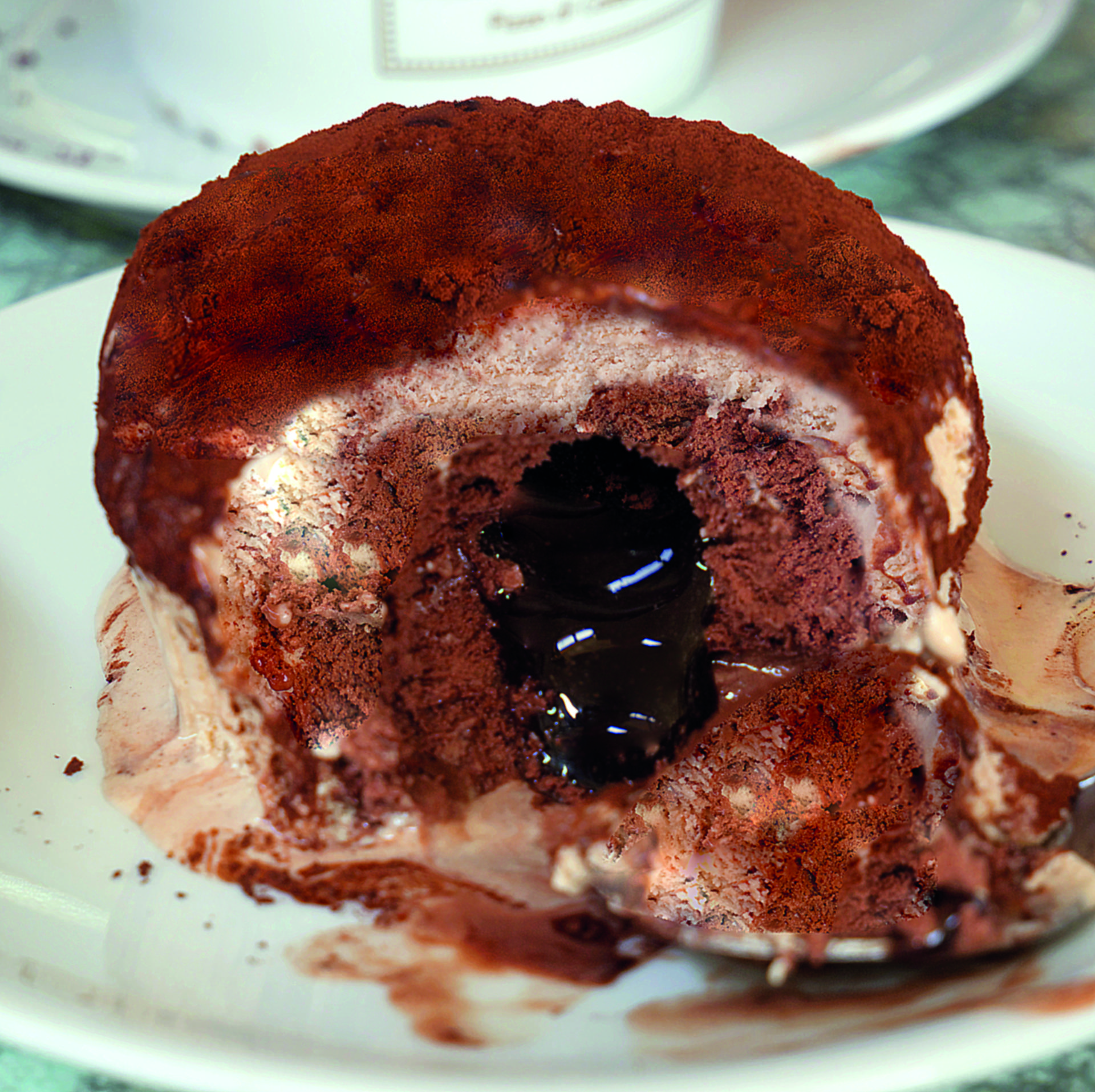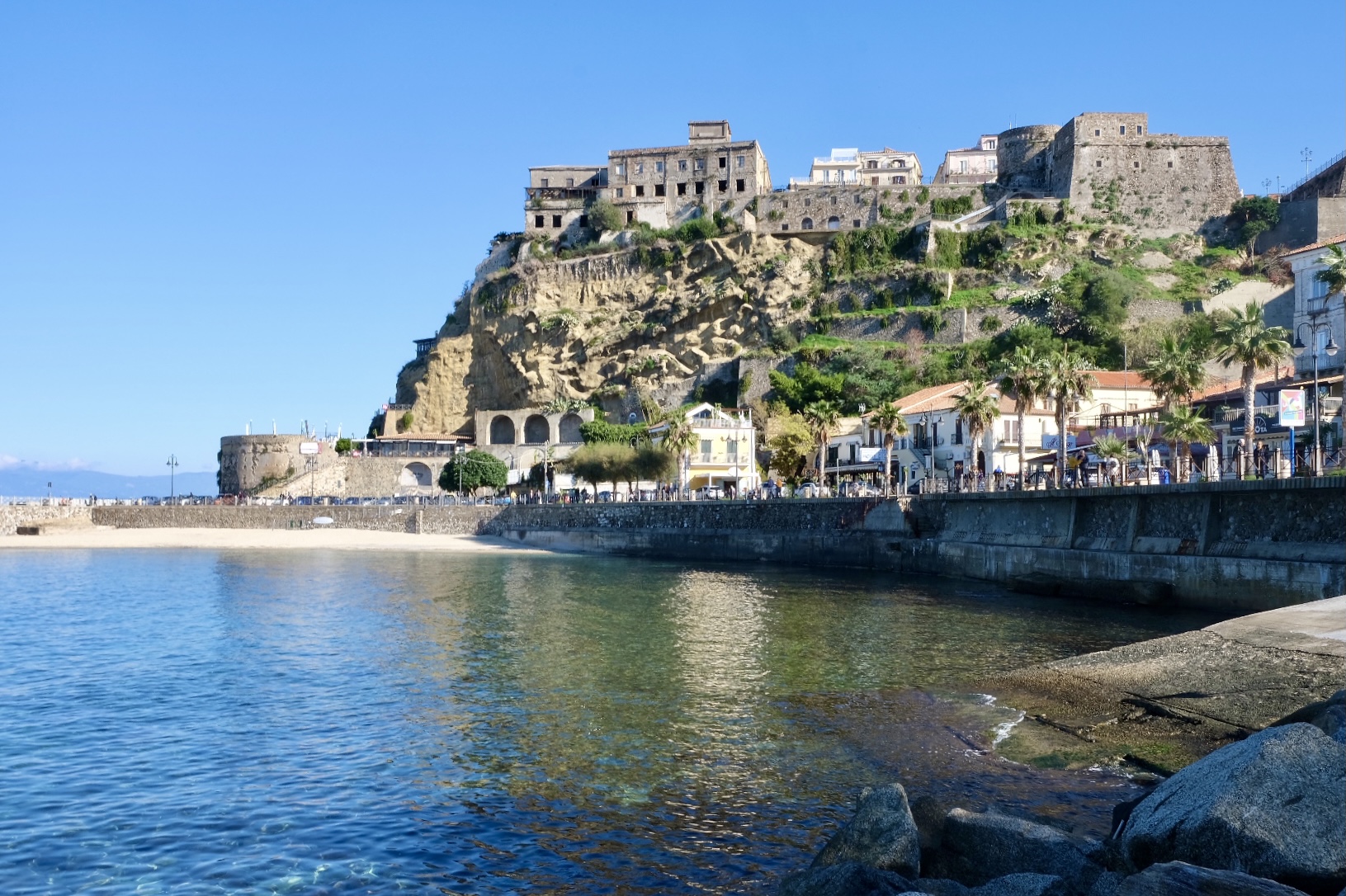Ice cream in Calabria? Tartufo of Pizzo
Tartufo of Pizzo, the artisan ice cream made in Calabria

Food and wine
Regione Calabria
If you get the urge to taste real Calabrian artisan ice cream there is only one place to satisfy it, the panoramic square in Pizzo, overlooking the sea on the beautiful Costa degli Dei, in the province of Vibo Valentia.
Here, in front of a panorama overlooking the sea, you can treat yourself to an ice cream that is the end of the world! The internationally renowned Tartufo of Pizzo (a candidate for the seal of quality) is the king of Calabrian ice cream.
Let's taste it together...
What to see and do in Pizzo
The rule is that the Tartufo of Pizzo should be tasted in the historic bars in the little square, one of the most evocative overlooks of the Costa degli Dei. The little square is the "parlor" of the historic centre of Pizzo, a seaside village perched on a small promontory in the centre of the Gulf of Sant'Eufemia. The town is arranged behind the imposing Aragonese Castle, built in the second half of the 15th century by Ferdinand I of Aragon. The Castle of Pizzo was the subject of an important and dramatic historical event. It is no coincidence that it is also known as Murat Castle, named after the King of Naples who was imprisoned and sentenced to death here. Napoleon Bonaparte's brother-in-law, King Joachim Murat landed in Pizzo without suspecting that the local people and authorities, harassed and full of discontent, would capture him and condemn him to execution, which was carried out on 13 October 1815. Today, the king's remains are kept in the Church of San Giorgio, one of the most precious churches in the old town, while the story is well told inside the castle itself, which houses the Murattiano Provincial Museum, rich in original artefacts from the period, and through an evocative historical re-enactment held every four years.
A must-see in Pizzo is the tiny Piedigrotta Church, a jewel on the water, carved entirely out of tuff by local sailors. Here too, history fades into legend. According to tradition, the small church was dug into the sandstone rock by some Neapolitan shipwrecked sailors at the end of the 17th century, to thank God for their salvation. The sailors attributed the miracle to the protection of a painting of the Madonna that was on the ship and which they found intact on the beach. The tufa sculptures inside tell the story in a plastic way, enduring the passage of time with difficulty. The small beach of the same name in front of it is one of those not to be missed along the Costa degli Dei.
The other beaches in Pizzo where you can take a dip are the Spiaggia della Marina, the most central and famous beach below the seafront promenade, which ends with the so-called Pizzapundi, the ideal promenade to admire the sunset over Stromboli; the free beach below the historic Hotel Grillo, and the so-called Spiaggia della Stazione, a short walk from the Pizzo Calabro train station, familiar and quiet, characterised by shallow water and various dry spots.
The Tartufo of Pizzo
Whether summer or winter, it is always the right time to sink your spoon into the melting heart of Tartufo of Pizzo, the Calabrian ice cream that boasts countless attempts at imitation. There is no history! The Tartufo of Pizzo is inimitable, as is the possibility of tasting it in its place of origin, Pizzo, in the centre of the village's delightful little panoramic square overlooking the sea, a stone's throw from the castle. This is the place where you are sure to escape the industrial production of a 100 per cent handmade ice cream, all "made in Calabria". What are the characteristics that make the Tartufo of Pizzo so special? Just taste it to find out. It is a hazelnut ice cream, moulded into the shape of a hemisphere in the palm of the hand and covered with a dusting of bitter cocoa, which surprisingly encloses a heart of melted chocolate.
The story of the Tartufo of Pizzo and its accidental birth is a curious one. It was 1940 when master pastry chef Dante Veronelli took over the Gran Bar Excelsior in the historic centre of Pizzo, renaming it Gelateria Dante. The business grew and was successful, so much so that Veronelli decided to take on a young confectioner from Messina, Giuseppe De Maria, known as Don Pippo. The two professionals set up a true "award-winning firm", which soon earned a name for itself due to the high quality of its raw materials and the unmistakable taste of its products. We are at the end of the Second World War, people are craving light-heartedness and new pleasures. Parties and weddings are celebrated, so that on one such occasion, having run out of moulds to make ice cream in bulk, Don Pippo decides to mould a hazelnut ball in the hollow of his hand with melted chocolate in the centre and... voila! The Tartufo of Pizzo was born.
The original recipe retains something of a secret, as it should, and is still jealously guarded today by master De Maria's grandchildren. Ten years later, in 1950, two waiters serving at Bar Dante, a certain Giorgio and Gaetano Di Iorgi, began to learn the secrets of the Tartufo of Pizzo so that when the master retired, they took over the historic business and in 1965 founded a new one, directly opposite: thus the current Bar Ercole was born (1965). From this moment on, the Di Iorgi's family-run business took off to become an excellence of Calabrian ice-cream factory, the only reference point for tasting the original Tartufo of Pizzo.

What to see and do in Pizzo
The rule is that the Tartufo of Pizzo should be tasted in the historic bars in the little square, one of the most evocative overlooks of the Costa degli Dei. The little square is the "parlor" of the historic centre of Pizzo, a seaside village perched on a small promontory in the centre of the Gulf of Sant'Eufemia. The town is arranged behind the imposing Aragonese Castle, built in the second half of the 15th century by Ferdinand I of Aragon. The Castle of Pizzo was the subject of an important and dramatic historical event. It is no coincidence that it is also known as Murat Castle, named after the King of Naples who was imprisoned and sentenced to death here. Napoleon Bonaparte's brother-in-law, King Joachim Murat landed in Pizzo without suspecting that the local people and authorities, harassed and full of discontent, would capture him and condemn him to execution, which was carried out on 13 October 1815. Today, the king's remains are kept in the Church of San Giorgio, one of the most precious churches in the old town, while the story is well told inside the castle itself, which houses the Murattiano Provincial Museum, rich in original artefacts from the period, and through an evocative historical re-enactment held every four years.
A must-see in Pizzo is the tiny Piedigrotta Church, a jewel on the water, carved entirely out of tuff by local sailors. Here too, history fades into legend. According to tradition, the small church was dug into the sandstone rock by some Neapolitan shipwrecked sailors at the end of the 17th century, to thank God for their salvation. The sailors attributed the miracle to the protection of a painting of the Madonna that was on the ship and which they found intact on the beach. The tufa sculptures inside tell the story in a plastic way, enduring the passage of time with difficulty. The small beach of the same name in front of it is one of those not to be missed along the Costa degli Dei.
The other beaches in Pizzo where you can take a dip are the Spiaggia della Marina, the most central and famous beach below the seafront promenade, which ends with the so-called Pizzapundi, the ideal promenade to admire the sunset over Stromboli; the free beach below the historic Hotel Grillo, and the so-called Spiaggia della Stazione, a short walk from Pizzo train station, familiar and quiet, characterised by shallow water and various dry spots.

https://calabriastraordinaria.it/en/news/ice-cream-in-calabria-tartufo-of-pizzo





